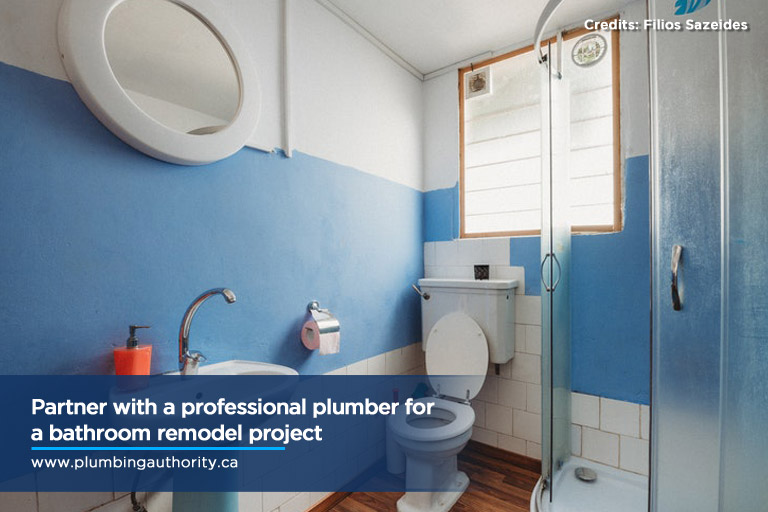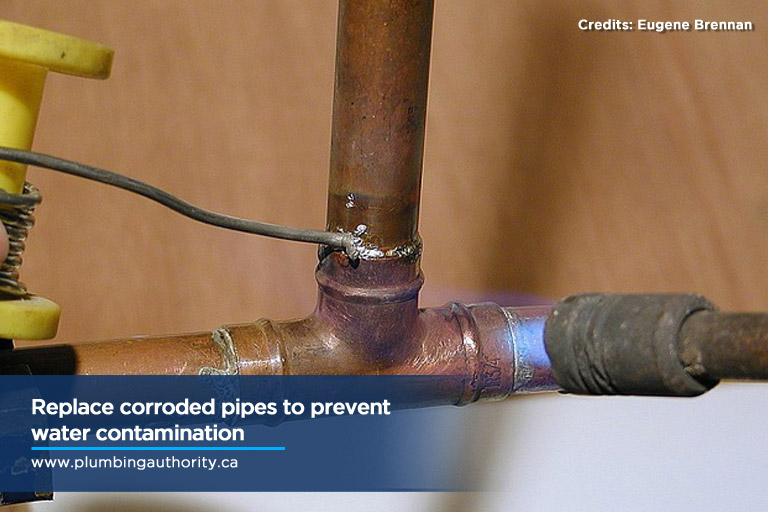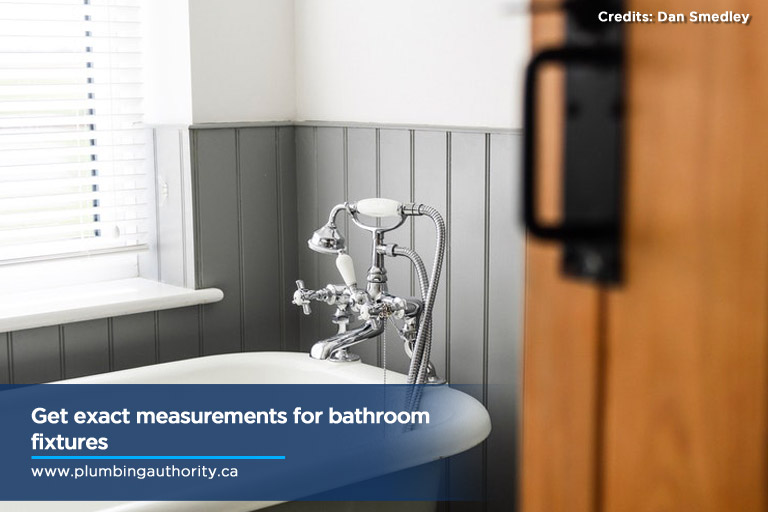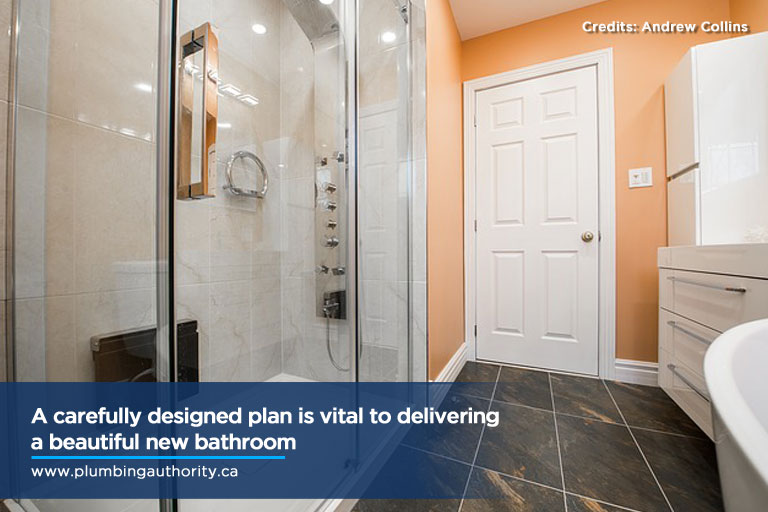
Some contractors who have just started in the business tend to raise a customer’s expectations in the hopes of establishing a good first impression. However, after the initial negotiations are made, undiscovered issues start to emerge which can blow up the estimated cost of the project. This most commonly happens in bathroom renovations, where the bulk of the work lies hidden underneath floors, behind sturdy-looking walls, and a diverse range of product options can get overwhelming.
To nip problems in the bud, contractors must work together with their clients in identifying common issues that arise in bathroom renovations, particularly detecting potential problems in existing fixtures and pipe works. Have your plumber visit the site to conduct a thorough inspection before drafting any plans or design for the project. This also allows your plumbing sub to size up the weight of the work at hand so you can both give your customer a realistic promise to deliver.
Below are some of the most common plumbing mistakes in bathroom renovations and how best to prevent them. Sort these problems right at the outset to keep a promising project from turning into a headache before it is completed.

1. Old, deteriorated pipes
The condition of the existing drainage systems can profoundly impact the cost of the project. Because pipes have varying ages and are made of different materials, it will take careful inspection to determine if the existing plumbing is already on its last legs.
Some old pipes will not show visible signs of deterioration, yet require replacement. Cast iron pipes corrode from the inside; they may appear okay, but beneath that exterior are corroded and could fail at any moment. You will need the expertise of a professional plumbing sub to assess the pipe carefully. This examination will help you detect if the thin pipe walls have corroded or a buildup of solids is present inside. In both instances, the pipe may need repair or replacement.

Types of pipes in today’s homes
*Copper pipes
These are the most commonly used pipes for clean water supply lines. Although they come in rigid and flexible types, copper pipes are still prone to corrosion due to mineral deposits contained in hard water.
*Galvanized pipes
These pipes are easily replaceable when a bathroom is up for a remodel. When replacing galvanized pipes, make sure to replace the full pipe run, as old galvanized pipe joints are heavily corroded. Deteriorated galvanized pipes can contain lead which can contaminate clean water. When ingested, lead can cause serious health concerns, including damage to kidneys and reproductive organs.
*Plastic pipes
One example of a plastic pipe that is commonly used in households today is Polyvinyl Chloride (PVC) pipes. While this pipe is extremely durable, it presents a different set of safety concern. Primarily used for drainage purposes, PVC is lightweight, so it cannot withstand extremely hot temperatures. The maximum operating temperature of PVC pipes is 60° Celsius. Anything beyond this can cause the pipe to break down. In case your client opts to replace their PVC, make sure your plumber is equipped with the right tools and expertise to deal with this material.
No matter the piping your customer has, be mindful of your liabilities. Before you go ahead to replace the system, remember that you are accountable for the pipe leaks. Twisting fittings and heating joints might result in upstream or downstream problems, which may only appear after the job is completed. If the leaks create further damage, the homeowner will turn to you for solutions and compensation.
Putting the new piping under a pressure test can prevent problems down the road. You can also cite a clause in your contract that limits your liability for any damages.

2. Bathroom fixtures that restrict access or mobility
If the homeowner wants their tub replaced, you may have trouble accessing drain and water supply lines. Also, remember that a bathtub, especially one made of cast-iron, is extremely heavy. Steel and fibreglass tubs are lighter and usually removable without much effort (unless they are oversized). Confirm with your client if destroying the fixture is necessary to complete the job.
Before agreeing with the upgrade work, have the client decide on the specific tub they want. Then get the correct measurements and bathroom space. Make sure it will fit into the bathroom. The installation might require the removal of the frame and door trim to get a few more inches; doing so will entail additional cost. Inform the homeowner if this work could require additional expense.
As you remove old vanities and sinks, you may run into problems with corroded fittings and pipe sizes, a missing vent, or a new sink that doesn’t fit into the existing cabinet. Whatever the solution may be, you should include the cost in your estimate (all the more if the problem calls for a solution that is not “by the book”).
While you’re at it, check on the existing pipes, fittings, and tubes under the sink. Leaving the old parts while altering the rest can cause issues along the way. Replace the supplies before they turn into costly problems long after the project is finished.

3. Hidden structural damage
Water damage, particularly leaks in shower valves or pans, may not be evident until you remove the fixture. Always inform your client about the possible added costs in case structural repairs are required. Consider asking the homeowner to choose the materials for the shower walls and floor if there’s going to be a need to rebuild the shower.
In replacing the shower plumbing, avoid making rough estimates when it comes to heights and dimensions. Get the exact measurements by asking your client to stand in the tub or shower space. Have them stand at the floor level of the shower/tub and not on the subfloor (because the difference can be about three or four inches).

4. Not having designed a plan
Finally, as in any construction project, a bathroom remodel will not take shape without an organized plan. There’s a lot of critical elements to a bathroom upgrade, and plumbing is just one of them. The plumbing system needs to be incorporated seamlessly into the rest of the work for the entire project to become a success. A well-thought-out plan is essential in avoiding the plumbing pitfalls outlined above.
Just as importantly, you need to partner with a plumber that has a wealth of experience in servicing the public and has a complete range of state-of-the-art equipment that gives them the capacity to do even the most complex plumbing jobs entrusted to them.
When you need an expert plumber in Newmarket, Bolton, King City, and the Greater Toronto Area, call Plumbing Authority. We’ll keep your business’ customers or tenants happy with immediate repairs for your plumbing woes. We offer free on-site estimates and 24-hour emergency services. Give us a call today at (647) 992-PIPE (7473).




